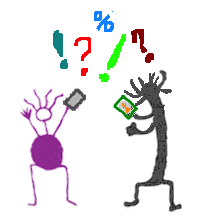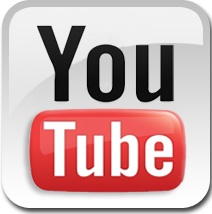
Section 6:
Formal Communications Strategies &
Avenues
to Prevent & Address
Urban Legends, Myth, Rumors &
Organized Misinformation Campaigns
This section of my web
site is no longer updated. The last update was in early
2023.
This page is part of a 11-part guide on preventing folklore,
rumors (or rumours), urban myths and organized misinformation
campaigns from interfering with development & aid/relief
efforts, and government initiatives regarding public health, the
environment, etc.
It is not a stand-alone page. It
should be read as part of the entire guide.
This is the link to the introduction
and index for the other pages in this guide.
Formal communications avenues
Formal communications avenues are the things you can write into
a strategy easily. They are the strategies that get studied in PR
and marketing classes. While leveraging informal networks is
vital, you also need to be thinking about formal communications
avenues - from billboards to murals to public service
announcements and on and on. These tactics alone won't work - it's
essential that they are supported by well-trained,
trusting network engaged in informal
interpersonal activities (see earlier section).
Formal communications can include advertising,
brochure-distribution, banners and presentations at:
- Sports events
- School and university events
- River clothes-washing point
- Religious-based gatherings
- Playgrounds
- Senior centers
- Ceremonies
- Fashion shows
- Public showings of popular movies
- Live theater or dance performances
- Billboards, banners, handouts
- Murals
- Advertising space
- Radio
- TV
- YouTube
- Online groups (Facebook groups, etc.)
- Phone text messaging (messages that are easily forwarded)
- Twitter, WhatsApp, Facebook
You also want to consult intensively with radio and TV for
message delivery through public service announcements, dramas,
news delivery, talk shows, etc. Never assume that a reporter
understands the facts regarding an activity you are undertaking
without someone from your initiative actually briefing that
reporter - and telling them upfront how you will be answering
certain questions. Also, ask reporters/show hosts what they are
hearing from their audiences.
Work to garner public endorsements by famous entertainment or
sports figures. For instance, in Liberia in 2008, a pop star
created a pop song to allay fears regarding the upcoming census.
Remember that "famous" is relative: someone well-known among
adults may not be well-known among teenagers, and vice versa, or
someone famous in rural areas may be unknown in cities, and vice
versa.
Use the
Facebook status
updates,
Twitter feeds and
other online social media platforms of all participating
organizations to deliver messages and counter misinformation. This
bullet point deserves an extensive, detailed strategy of its own,
and if I have time (and funding!) I will certainly do that.
Don't just post one message to a social media channel and think
you are done, and don't just post text-based messages. Think about
photos, artwork and hashtags. Encourage staff and all of your
collaborators to share your social media messages as well.
Remember that you can re-purpose communications tools from other
sources for use on social media. For instance,
Craig
Manning, a health communications strategist with the Viral
Special Pathogens Branch of the Centers for Disease Control and
Prevention, was sent to Guinea at the first outbreak of the
Ebola crisis in March 2014. When one of his colleagues, Pierre
Roland, an expert on Ebola, gave a presentation at the U.S.
Embassy in Conkary about mitigating risks of transmission, Manning
recorded him, then had the content edited into 30 second snippets
translated into 10 local languages and broadcast over local radio
stations and TV - these would be great to share repeatedly on
social media as well.
What about a rickshaw parade that carries banners with the
message you want to deliver? Or a public kaoroke performance with
messages in between songs? Think outside the box! Make message
delivery fun and something the press would love to
cover!
For examples of how billboards, TV advertisements, social media
and other avenues have been used to counter misinformation, try
The Communications Initiative,
which frequently talks about strategies used by various
humanitarian and international development organizations.
It probably goes without saying, but be ready to be flexible
and to adjust your communications strategies and activities
suddenly. It is highly unlikely your strategy will do all it
needs to as it was originally designed to.
Quick Links
 my home
page
my home
page
 my
consulting services & my workshops
& presentations
my
consulting services & my workshops
& presentations
 my
credentials & expertise
my
credentials & expertise
 Affirmation that this web site is
created & managed by a human.
Affirmation that this web site is
created & managed by a human.
 My book: The
Last Virtual
Volunteering Guidebook
My book: The
Last Virtual
Volunteering Guidebook
 contact me
or see my
schedule
contact me
or see my
schedule
 Free Resources: Community Outreach, With & Without Tech
Free Resources: Community Outreach, With & Without Tech
 Free Resources: On
Community Engagement, Volunteering & Volunteerism
Free Resources: On
Community Engagement, Volunteering & Volunteerism
 Free Resources: Technology
Tips for Non-Techies
Free Resources: Technology
Tips for Non-Techies
 Free Resources:
Nonprofit, NGO & other mission-based management resources
Free Resources:
Nonprofit, NGO & other mission-based management resources
 Free Resources: Web
Development, Maintenance, Marketing for non-Web designers
Free Resources: Web
Development, Maintenance, Marketing for non-Web designers
 Free Resources: Corporate
philanthropy / social responsibility programs
Free Resources: Corporate
philanthropy / social responsibility programs
 Free Resources: For people
& groups that want to volunteer
Free Resources: For people
& groups that want to volunteer
 linking to
or from my web site
linking to
or from my web site
 The
Coyote Helps Foundation
The
Coyote Helps Foundation
 me on
social media (follow me, like me, put me in a circle,
subscribe to my newsletter)
me on
social media (follow me, like me, put me in a circle,
subscribe to my newsletter)
 how to
support my work
how to
support my work
To know when I have developed a new
resource related to the above subjects, found a great
resource by someone else, published
a
new blog,
uploaded a new
video,
or to when & where I'm training or presenting, use any
of the following social media apps to follow me on any of
these social media platforms:






Disclaimer: No guarantee of accuracy or suitability is made by
the poster/distributor of the materials on this web site.
This material is provided as is, with no expressed or implied
warranty or liability.
See my web site's privacy
policy.
Permission is granted to copy, present and/or distribute a limited
amount of material from my web site without charge if
the information is kept intact and without alteration, and is
credited to:

Otherwise, please contact me
for permission to reprint, present or distribute these materials
(for instance, in a class or book or online event for which you
intend to charge).
The art work and material on
this site was created and is copyrighted 1996-2025
by Jayne Cravens, all rights reserved
(unless noted otherwise, or the art comes from a link to
another web site).



 my home
page
my home
page my
consulting services & my workshops
& presentations
my
consulting services & my workshops
& presentations my
credentials & expertise
my
credentials & expertise Affirmation that this web site is
created & managed by a human.
Affirmation that this web site is
created & managed by a human. My book: The
Last Virtual
Volunteering Guidebook
My book: The
Last Virtual
Volunteering Guidebook contact me
or see my
schedule
contact me
or see my
schedule Free Resources: Community Outreach, With & Without Tech
Free Resources: Community Outreach, With & Without Tech Free Resources: On
Community Engagement, Volunteering & Volunteerism
Free Resources: On
Community Engagement, Volunteering & Volunteerism Free Resources: Technology
Tips for Non-Techies
Free Resources: Technology
Tips for Non-Techies Free Resources:
Nonprofit, NGO & other mission-based management resources
Free Resources:
Nonprofit, NGO & other mission-based management resources Free Resources: Web
Development, Maintenance, Marketing for non-Web designers
Free Resources: Web
Development, Maintenance, Marketing for non-Web designers Free Resources: Corporate
philanthropy / social responsibility programs
Free Resources: Corporate
philanthropy / social responsibility programs Free Resources: For people
& groups that want to volunteer
Free Resources: For people
& groups that want to volunteer linking to
or from my web site
linking to
or from my web site The
Coyote Helps Foundation
The
Coyote Helps Foundation me on
social media (follow me, like me, put me in a circle,
subscribe to my newsletter)
me on
social media (follow me, like me, put me in a circle,
subscribe to my newsletter)